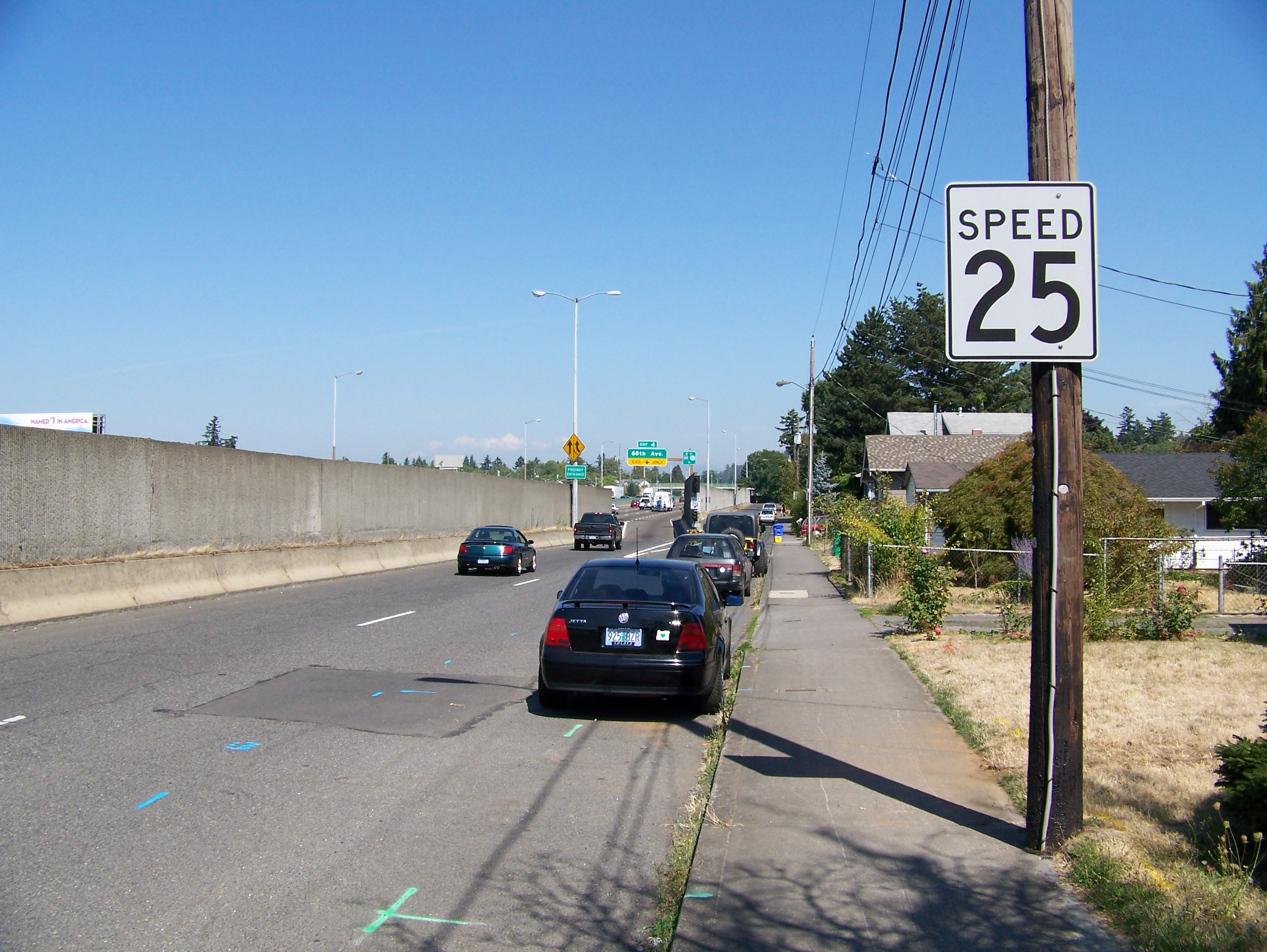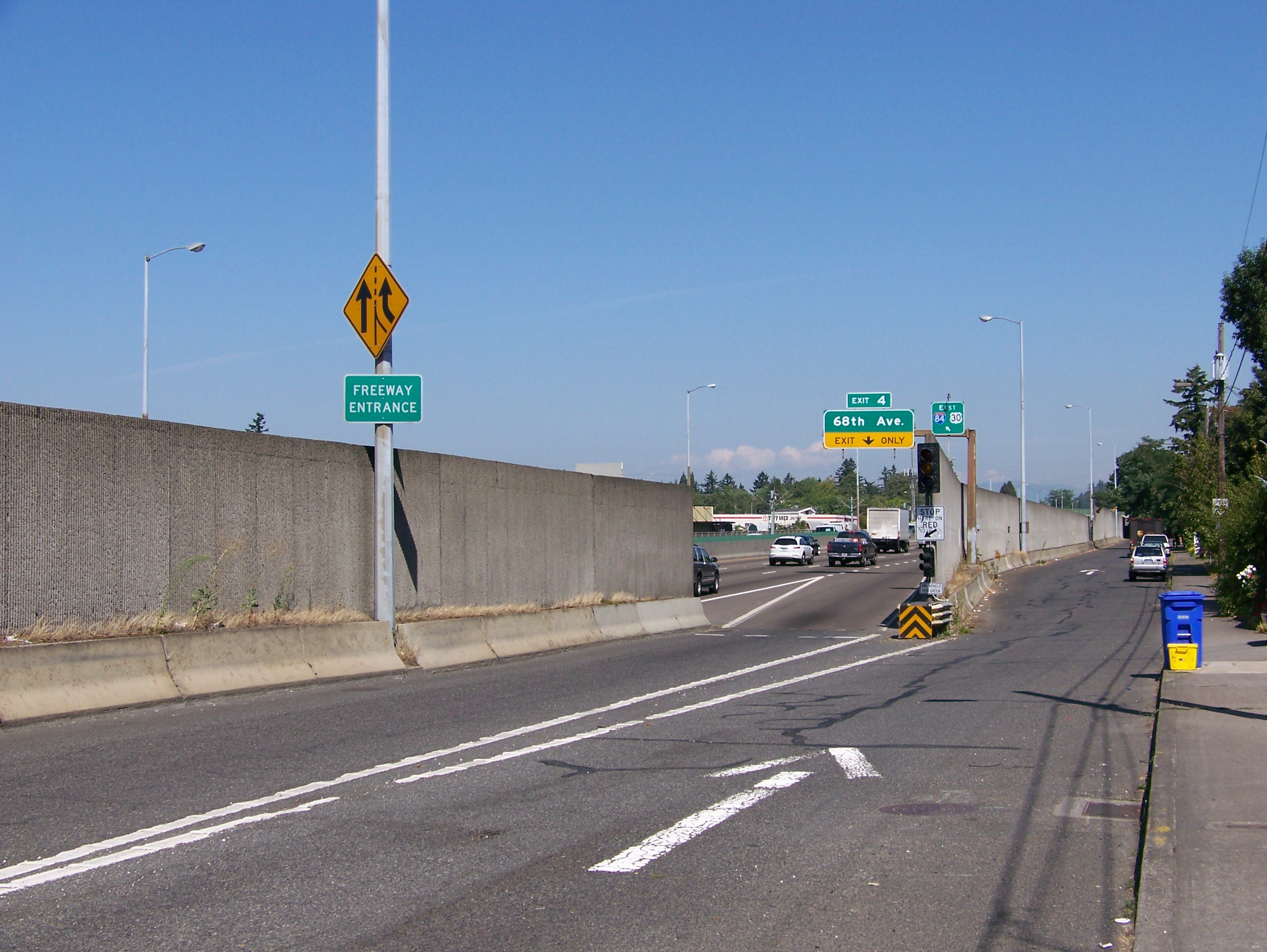Portland Oregon PD, an agency without oversight or a conscience, facilitated by unconstitutional state laws and kangaroo courts.
06/09/09 20:57
Nobody likes the speed traps that have become the norm across America. Portland PD has taken it to new levels, in this instance the PPD set up its criminal enterprise on a freeway onramp coming off of N.E. Willows, using photo enforcement based on the adjacent 25 mph limit to cite en masse those accelerating to safely enter the freeway. Why do they do this, because they can! PDF version
Checks and balances simply do not exist when the legislative, administrative and judicial branches of our government have a financial interest in a conviction.
Oregon, like many other states have devolved into rogue nanny states where a few believe that despite our Constitution, they can decide when due process applies, or not.
Our laws and traffic safety engineering practices are supposed to make our roads safer while assuring fair laws for the motorists.
They’re predicated on the fact that the super majority of people are law-abiding, act responsibly, and as they go about their lives the consensus of their actions is the best judge as to what is safe. It’s the job of the engineer to quantify this safe for conditions range to assure the roadway design and traffic control meets our safety needs, and enforcement is only focused on those truly at risk.
Since 1988, the local authorities responsible for each roadway segment in the nation have been required by law to do periodic safety audits to assure the safety needs of the public are being met; applying nationally accepted engineering practices; and it shall be documented.
This engineering study becomes the required factual foundation for all traffic control and the exercise of police powers thereof for that roadway.
In 1995, the Basic Speed Law became our national standard, where speeds that are safe for conditions are considered safe. To post a speed limit, a study must first determine a limit is warranted, if so, then the posted value is to be the prevailing safe speed, AKA prima facie limit. Congress repealed invented absolute and or statutory values.
Compare that to Oregon law, and others, where instead of a fact-based system, its Basic Speed Law has become a labyrinth of invented statutory values, with invented absolute shall not exceed enforcement thresholds, with additional higher penalties for even greater invented speed thresholds.
The object of a study is to determine the prevailing range of safe for condition speeds, to assure that all engineering decisions are fact based for that particular segment of roadway. Oregon simply doesn’t do this, its traffic control, including signal timing, curve and passing exclusion zones etc are based on values that do not meet the safety needs of the motorists.
When the Oregon DOT does do a study, it’s designed to produce a posting that doesn’t represent the actual range of safe speeds, by direction, for a particular segment of roadway. Instead, it results in an absolute enforcement value 10 to 15 mph and more below its cursory finding’s safest speed while the extent of the safe range remains unknown; to be used in a court system that does not recognize otherwise safe driving as an affirmative defense.
Which begs another question, if the engineers determine the range of safe for condition speeds for a segment of a roadway, and the state practices are clearly deficient; or non existent because the overwhelming majority of Oregon’s safety decisions are based on invented values and known unsafe practices, how would an officer know what is safe, or not?
They don’t, and they’re incompetent to testify that any speed or act per se was unsafe.
Example, if you go to pass and the exclusion zone is too short for the prevailing traffic speeds, or the signal clearance timing is inadequate, and it gives you a green when known cross-traffic entries are still occurring, whose fault is it? In Oregon, it’s always the driver.
What’s more incredible, not only are the engineering safety factors in Oregon unknown, law enforcement officers receive no training whatsoever in this field, or how to apply it.
Therefore, as practiced, the majority of traffic stops are arbitrary and capricious - invented probable causes, violating the RICO Act, and unconstitutional. The good news, our Constitution is there to protect us and disrupt non-conforming practices.
To be Constitutional all practices and regulations in this field shall be uniform in application, expectation and fact-based regardless of jurisdiction or state lines; and its foundation and rational must be subject to, and be able to withstand cross-examination while conforming to federal equal protection and void for vagueness protections.
There are judges who respect the rule of law. With our voices, they will one at a time turn this tide of tyranny. The laws we need to make our roads safer and assure due process are already in place, it’s called the Constitution; all we have to do is demand that it be applied.
We believe knowledge is power, click here to learn more.
Oregon, like many other states have devolved into rogue nanny states where a few believe that despite our Constitution, they can decide when due process applies, or not.
Our laws and traffic safety engineering practices are supposed to make our roads safer while assuring fair laws for the motorists.
They’re predicated on the fact that the super majority of people are law-abiding, act responsibly, and as they go about their lives the consensus of their actions is the best judge as to what is safe. It’s the job of the engineer to quantify this safe for conditions range to assure the roadway design and traffic control meets our safety needs, and enforcement is only focused on those truly at risk.
Since 1988, the local authorities responsible for each roadway segment in the nation have been required by law to do periodic safety audits to assure the safety needs of the public are being met; applying nationally accepted engineering practices; and it shall be documented.
This engineering study becomes the required factual foundation for all traffic control and the exercise of police powers thereof for that roadway.
In 1995, the Basic Speed Law became our national standard, where speeds that are safe for conditions are considered safe. To post a speed limit, a study must first determine a limit is warranted, if so, then the posted value is to be the prevailing safe speed, AKA prima facie limit. Congress repealed invented absolute and or statutory values.
Compare that to Oregon law, and others, where instead of a fact-based system, its Basic Speed Law has become a labyrinth of invented statutory values, with invented absolute shall not exceed enforcement thresholds, with additional higher penalties for even greater invented speed thresholds.
The object of a study is to determine the prevailing range of safe for condition speeds, to assure that all engineering decisions are fact based for that particular segment of roadway. Oregon simply doesn’t do this, its traffic control, including signal timing, curve and passing exclusion zones etc are based on values that do not meet the safety needs of the motorists.
When the Oregon DOT does do a study, it’s designed to produce a posting that doesn’t represent the actual range of safe speeds, by direction, for a particular segment of roadway. Instead, it results in an absolute enforcement value 10 to 15 mph and more below its cursory finding’s safest speed while the extent of the safe range remains unknown; to be used in a court system that does not recognize otherwise safe driving as an affirmative defense.
Which begs another question, if the engineers determine the range of safe for condition speeds for a segment of a roadway, and the state practices are clearly deficient; or non existent because the overwhelming majority of Oregon’s safety decisions are based on invented values and known unsafe practices, how would an officer know what is safe, or not?
They don’t, and they’re incompetent to testify that any speed or act per se was unsafe.
Example, if you go to pass and the exclusion zone is too short for the prevailing traffic speeds, or the signal clearance timing is inadequate, and it gives you a green when known cross-traffic entries are still occurring, whose fault is it? In Oregon, it’s always the driver.
What’s more incredible, not only are the engineering safety factors in Oregon unknown, law enforcement officers receive no training whatsoever in this field, or how to apply it.
Therefore, as practiced, the majority of traffic stops are arbitrary and capricious - invented probable causes, violating the RICO Act, and unconstitutional. The good news, our Constitution is there to protect us and disrupt non-conforming practices.
To be Constitutional all practices and regulations in this field shall be uniform in application, expectation and fact-based regardless of jurisdiction or state lines; and its foundation and rational must be subject to, and be able to withstand cross-examination while conforming to federal equal protection and void for vagueness protections.
There are judges who respect the rule of law. With our voices, they will one at a time turn this tide of tyranny. The laws we need to make our roads safer and assure due process are already in place, it’s called the Constitution; all we have to do is demand that it be applied.
We believe knowledge is power, click here to learn more.


